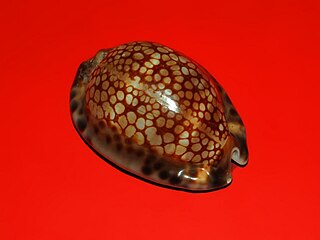
Mauritia flexuosa, known as the moriche palm, ité palm, ita, buriti, muriti, miriti, canangucho (Colombia), or aguaje (Peru), is a palm tree. It grows in and near swamps and other wet areas in tropical South America. It has been reported from Trinidad, Colombia, Venezuela, Guyana, Suriname, French Guiana, Brazil, Ecuador, Peru, and Bolivia.

The moriche oriole is a passerine bird in the New World family Icteridae. It is unrelated to Old World orioles. It is a breeding resident in the tropics of eastern South America. This bird is noted for its close association with the palm Mauritia flexuosa.

Pico da Neblina National Park is a national park in the state of Amazonas in the north of Brazil, bordering on Venezuela. It overlaps with several indigenous territories, which creates tensions over land use, as does the military presence due to the border location. The park includes lowlands around the Rio Negro, partly flooded, and mountains that include the highest peak in Brazil, after which the park is named. The wide variety of physical environments supports great biodiversity, including several endangered species.

Güeppi-Sekime National Park is a protected area located in the Peruvian region of Loreto, on the border with Ecuador. The park encompasses 203,628.51 hectares (2,036 km2) of forests in a landscape that features hills and seasonally flooded lowlands.
Beauprea congesta is a species of plant in the family Proteaceae. It is endemic to New Caledonia.
Roupala sphenophyllum is a species of plant in the family Proteaceae. It is endemic to Peru.
Stenocarpus dumbeensis was a species of plant in the family Proteaceae. It was endemic to New Caledonia.
Stenocarpus villosus is a species of plant in the family Proteaceae. It is endemic to New Caledonia. It is threatened by habitat loss.

Mauritia is a genus of fan palms which is native to northern South America and to the Island of Trinidad in the Caribbean. Only two species are currently accepted.

Mauritia arabica, common name the Arabian cowry, is a species of cowry, a sea snail, a marine gastropod mollusk in the family Cypraeidae, the cowries.
As of July 2016, the International Union for Conservation of Nature (IUCN) lists 238 conservation dependent species. 0.29% of all evaluated species are listed as conservation dependent. The IUCN also lists seven subspecies and five varieties as conservation dependent.

Mauritia eglantina, the 'Dog-Rose Cowry' or 'Eglantine Cowry', is a species of sea snail, a cowry, a marine gastropod mollusk in the family Cypraeidae, the cowries.

Mauritia maculifera, common name : the blotched cowry or reticulated cowry, is a species of sea snail, a cowry, a marine gastropod mollusk in the family Cypraeidae, the cowries.

Mauritia depressa, common name the "depressed cowry" or the "honey cowry", is a species of sea snail, a cowry, a marine gastropod mollusk in the family Cypraeidae, the cowries.

Mauritia histrio, common name the harlequin cowry or the stage cowry, is a species of sea snail, a cowry, a marine gastropod mollusk in the family Cypraeidae, the cowries.

Mauritia scurra, common name the jester cowry, is a species of sea snail, a cowry, a marine gastropod mollusk in the family Cypraeidae, the cowries.

Mauritia is a genus of sea snails, marine gastropod molluscs in the family Cypraeidae, the cowries. These shelled molluscs are generally exclusive on the island of Mauritius, hence their name Mauritia.

Spodoptera mauritia, the lawn armyworm or paddy swarming caterpillar, is a moth of the family Noctuidae. The species was first described by Jean Baptiste Boisduval in 1833. Able to eat many types of food, it is a major pest throughout the world.
Eupalamides cyparissias is a moth in the Castniidae family. It is widespread in the Amazon basin including Peru, Colombia, Ecuador, Venezuela, Brazil, the Guianas, Suriname and north to Panama.
Hevea benthamiana is a species of rubber tree in the genus Hevea, belonging to the family Euphorbiaceae. A medium-sized deciduous tree growing to a height of about 27 m (90 ft), it is native to the rainforests of northern Brazil, Colombia and Venezuela.













